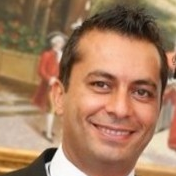10th Anniversary of Nanomaterials—Recent Advances in Nanofabrication and Nanomanufacturing
A special issue of Nanomaterials (ISSN 2079-4991). This special issue belongs to the section "Nanofabrication and Nanomanufacturing".
Deadline for manuscript submissions: closed (20 April 2021) | Viewed by 35629
Special Issue Editor
Interests: atomic layer deposition; photocatalysis; electrospinning; nanomaterials; sensors; thin films
Special Issues, Collections and Topics in MDPI journals
Special Issue Information
Dear Colleagues,
We are celebrating the 10th anniversary of Nanomaterials with a Special Issue in the Section "Nanofabrication and Nanomanufacturing" (ISSN 2079-4991; CODEN: NANOKO) in 2020.
On behalf of the Editor-in-Chief, Prof. Dr. Shirley Chiang, and of members of the Editorial Office, we would like to take this opportunity to thank our authors and reviewers for their valuable contributions and for ensuring that Nanomaterials is a successful and respected journal in its field. To highlight this anniversary, we will lead a Special Issue that will cover various topics related to Nanofabrication and Nanomanufacturing. It will consider manuscripts dealing with topics ranging from novel nanostructures and architecture using innovative synthesis, fabrication, and manufacturing methods enabling the control of their properties, as well as their applications.
Dr. Mikhael Bechelany
Guest Editor
Manuscript Submission Information
Manuscripts should be submitted online at www.mdpi.com by registering and logging in to this website. Once you are registered, click here to go to the submission form. Manuscripts can be submitted until the deadline. All submissions that pass pre-check are peer-reviewed. Accepted papers will be published continuously in the journal (as soon as accepted) and will be listed together on the special issue website. Research articles, review articles as well as short communications are invited. For planned papers, a title and short abstract (about 100 words) can be sent to the Editorial Office for announcement on this website.
Submitted manuscripts should not have been published previously, nor be under consideration for publication elsewhere (except conference proceedings papers). All manuscripts are thoroughly refereed through a single-blind peer-review process. A guide for authors and other relevant information for submission of manuscripts is available on the Instructions for Authors page. Nanomaterials is an international peer-reviewed open access semimonthly journal published by MDPI.
Please visit the Instructions for Authors page before submitting a manuscript. The Article Processing Charge (APC) for publication in this open access journal is 2900 CHF (Swiss Francs). Submitted papers should be well formatted and use good English. Authors may use MDPI's English editing service prior to publication or during author revisions.






